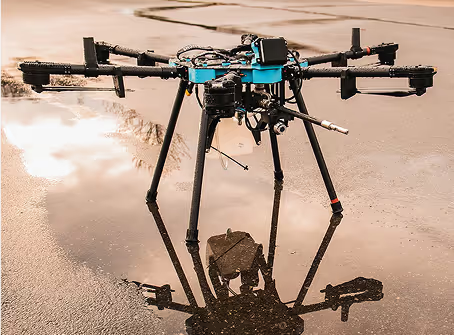
Built in America, Built for ROI: What Our First 500 Robots Taught Us
Robots are not apps. You cannot A/B test your way to a machine that changes an industry. You have to ship, stand next to customers while it works, and take responsibility for the outcome. We have deployed 500 robots into real businesses. It took five years to go from 0 to 100. We went from 400 to 500 in four months. We are sharing a non-exhaustive list of what we learned in hopes that it helps others think clearly about robotics. It is an important and still nascent industry, and our vantage point is unique because we build, deploy, service, and scale robots in the field every day, from Charlotte, NC.
Robots are not apps. You cannot A/B test your way to a machine that changes an industry. You have to ship, stand next to customers while it works, and take responsibility for the outcome.
We have deployed 500 robots into real businesses. It took five years to go from 0 to 100. We went from 400 to 500 in four months.
We are sharing a non-exhaustive list of what we learned in hopes that it helps others think clearly about robotics. It is an important and still nascent industry, and our vantage point is unique because we build, deploy, service, and scale robots in the field every day, from Charlotte, NC.
Our three fundamental beliefs about the future
- Robots are the future of dull, dirty, dangerous, and demeaning jobs. Robots increase human dignity by removing work that ruins bodies and shortens careers.
- Robots must be built in the United States. A domestic supply chain is essential for economic resilience and national security.
- Robots plus automation unlock human abundance. Everything that moves will be automated over time.
1) Master one job, design for expansion
Reputation is currency in the trades. You earn it by mastering one task first and becoming the reliable tool crews ask for. That first win proves you can deliver a robot people trust and businesses rely on.
Think LEGO, not Swiss Army knife. A Swiss Army knife can technically do many things, but none as well as a purpose-built tool and it rarely holds up in industrial or professional use. Build a common brain and stable base with standardized connection points, then add specialized payloads only when the job requires them. Architect for expansion while you execute, so new capabilities click into the same system without a ground-up rebuild.
This is the NVIDIA arc: start with a concrete performance problem in graphics, build a repeatable architecture, then extend the same core into new workloads and markets. Robotics should follow the same pattern: master one job, keep the base constant, and add specialized payloads and software as new bricks.
Generalist robots that are mediocre at everything always lose to robots that are great at the task at hand in real commercial and industrial settings. I don’t care what the headlines say. Adoption in B2B robotics always comes down to ROI.
Marketing doesn’t win. Proof and clear ROI in the field wins at scale.
2) Focus on transformative ROI
Marketing gets you a meeting. Proven outcomes get you adoption. In serious commercial settings, pilots are auditions, not victories.
Our bar
- Up to 5x faster. A radical shift in how the work is done, not an incremental improvement. Customers need a compelling reason to switch from the status quo.
- We emphasize growth and efficiency over simple labor reduction: throughput per crew, revenue per day, job cycle time, consistency, and rework avoided.
- Proof comes from production jobs, not demos.
Sidebar: Why B2B adoption beats B2C
Household robotics has allure, but adoption lags even for products that work and are affordable. Quick show of hands: what percent of your neighbors run robot lawn mowers? They have been around for years, often cost under $1,000, and still see low penetration. In B2B, the buyer has an active P&L and adopts when the job gets done faster, safer, and more profitably. That is where the next wave of robotic adoption will compound.
3) Own the customer relationship
Integrate hardware, software, training, service, and parts so you own the outcome. That earns trust and creates a distribution moat through workflow integration, training, and the internal playbooks your customers build around your platform.
Owning the outcome also makes you faster. If you do not own repairs or training, every product update creates drag and cost. Control the loop, iterate quickly, and keep customers happy through change.
4) Control the full stack: software is not enough
Early advice we heard: focus on software and let someone else handle hardware. That is the quickest way to be three layers removed from your user and to lose control of reliability and iteration.
Hard take: If you want to sell to customers who use the product every day, outsourcing the physical stack is the dumbest thing you can do. You will be slow to fix issues, slow to improve, and you will not own the future of your product.
Why full stack control wins
- Reliability and safety. You control tolerances, power, thermals, EMI, sensing, and failure modes. That is where uptime is won.
- Iteration speed. Hardware, firmware, and software evolve together. You ship coordinated updates instead of waiting on vendor roadmaps.
- Serviceability and telemetry. Consistent interfaces and LTE connected diagnostics make field support fast and predictable.
- Independence. You are not gated by third party repair loops or parts bans. You can fix defects and improve the product on your schedule.
Owning the stack is not about perfection. It is about earning the right to improve fast in the real world.
5) Reliability and customer success are non-negotiable
You win only when your customer wins. Customer wins and reliability are your marketing. Measure it and organize the company around improving it.
How we measure progress
- Our north star is Robot Operating Minutes (ROM). More minutes doing productive work means customers are winning.
- We track the ratio of operating hours to customer issues and work to improve it continually.
Most customers do not expect perfection with frontier tech. They expect visible progress, quick action, and clear communication when something goes wrong.
6) Robots are learning and data platforms
A production robot should both do work and produce a stream of high quality operational data. This data improves autonomy, reduces downtime, informs preventive maintenance, and opens software revenue. Tesla is a useful parallel: large scale deployments created the driving data that now powers Full Self Driving. The same logic applies in industrial robotics.
The goal is not to simply sell data. Use it to deliver better outcomes and, where appropriate, monetize the insight stream.
7) Supply chain is strategy
You cannot service customers if you cannot build and repair machines. Component choices, vendor depth, domestic availability, and test coverage matter. Invest early in:
- Second sources for critical parts
- Clear QA and QC at incoming, in process, and final assembly
- Bills of materials that are stable and serviceable in the field
- Spare parts logistics that match your installed base
A great supply chain turns reliability into a habit, not an act of heroism.
8) Build in the USA: resilience, security, velocity
Building domestically is not about symbolism. It is a performance choice.
- Economic resilience. Domestic sourcing shortens lead times, reduces single points of failure, and avoids customs and port delays that stall revenue.
- National security. Critical infrastructure depends on trustworthy supply chains. A U.S. based stack reduces exposure to geopolitical shocks and policy whiplash.
- Data privacy and control. When hardware, firmware, and fleet data are under domestic control, compliance is simpler and customer risk is lower.
Service speed is the most visible difference. Before we built our own systems, we relied on international technology. Repairs routinely took months. With DJI, our average turnaround was about 4.5 months, and some units never returned. International shipping and queue times erased revenue opportunities. When a robot is a P&L asset, a quarter without it is unacceptable. Domestic design, parts, and repair centers mean fixes in days, not months.
This shift is happening across categories. For products that matter to operations, domestic build is becoming the default expectation.
9) Operations are as hard as the tech
Standing up a facility, production line, vendor management, technician training, and repair flows is real work. Scalable hardware powered by software and electronics is even harder. The best way to deliver a scalable robot is to focus relentlessly on quality. Treat service as a product. Design for maintainability: fast access to wear parts, diagnostic telemetry, and procedures that a field tech can run in minutes. Connectivity is critical. If you send robots into the wild without LTE, your ability to troubleshoot and support customers will struggle. Ubiquitous connectivity is how you manage a growing fleet.
Robots are like cars. Even with a century of learning, cars still need tires, oil, and brake pads regularly changed. Your robots will need planned maintenance and unplanned repairs. Design the machine and the org for that reality.
10) Training beats turnover
Many industrial customers have high crew turnover. If your training assumes a stable team, the deployment will stall. Make training easy, accessible, and scalable so a new operator can become productive quickly and safely.
11) Field time compounds
One hour on a job site is worth ten in the office. You will learn more standing with a customer than you will in any simulator. Ship, observe, fix, and repeat. The feedback loop is where moats form.
We require every employee to attend at least one job site per year, regardless of role. If you are in engineering, customer success, sales, and adjacent teams, it is many more. Field time sharpens judgment and keeps the whole company grounded in customer outcomes.
12) Move fast to learn, not just to move
Speed without learning is noise. Move fast when you can extract a new truth from the field. Slow down when changes stop teaching you.
A simple guardrail: every change ships with a hypothesis and a metric. If you cannot write both in a sentence, you are guessing.
13) Solve for problems, not features
Customers change behavior when you change their economics. Focus on big, frequent, painful work and aim for step changes, not marginal gains. Always anchor on the customer problem. Robots that do not solve real world problems are useless. Features that impress in demos but fail on job sites do not matter. Keep asking: does this change an outcome the P&L can feel?
14) Be inevitable, not just innovative
Pick markets where adoption is a matter of when, not if: labor shortages, safety exposure, and chronic inefficiency. Show up with a working product, a clear ROI, and a plan to support it for years. That is what leadership looks like.
15) Build the team you can trust, then listen to them
Robotics is a team sport. Hire people who take ownership, who will meet you at midnight at a customer site, and who tell you the truth
The next decade will be decided by deployed minutes, not demos or press cycles. Our north star is Robot Operating Minutes because minutes compound into learning, reliability, and customer trust. That is how Tesla turned fleet miles into Full Self Driving and how NVIDIA turned a graphics engine into a compute platform. Robotics follows the same pattern: specialize, deploy, learn, expand.
We build in the United States because resilience matters. We focus on B2B because outcomes are measurable. We design like LEGO so new payloads click into a proven base. We own the outcome so iteration is fast and support is real.
If you are building, chase customer outcomes over features. If you are buying, demand radical performance, not incrementalism. If you are investing, back teams that ship, service, and learn in the field.
Robots are the arms and legs of AI. Done right, they raise productivity, improve safety, and increase human prosperity. We are just getting started. See you at 1,000.
Related Articles
Lucid Bots Podcast
How Ryan Godwin is Transforming Exterior Cleaning with the Sherpa Drone
Dive into the future of exterior cleaning with Ryan Godwin, the visionary behind Lucid Bots. Discover how Ryan is leveraging cutting-edge robotics to revolutionize cleaning for buildings and outdoor surfaces—boosting efficiency, safety, and sustainability.
.png)



.png)
.svg)
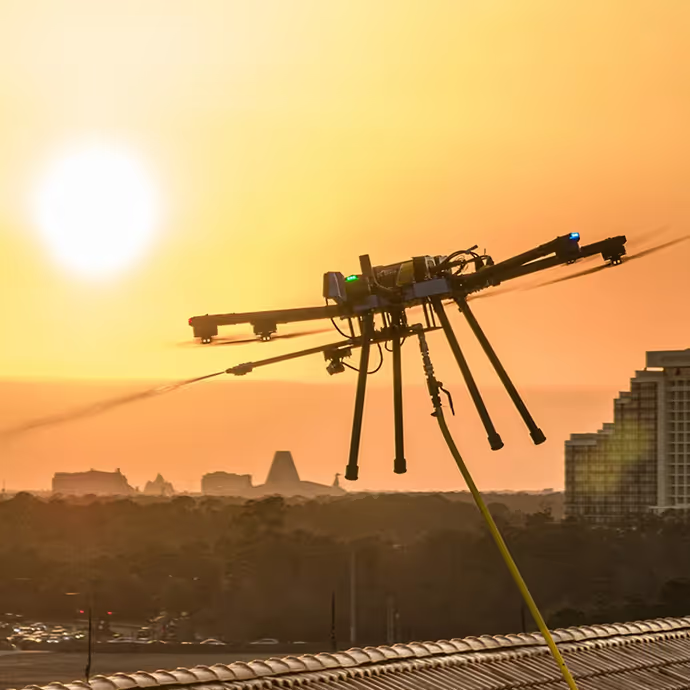
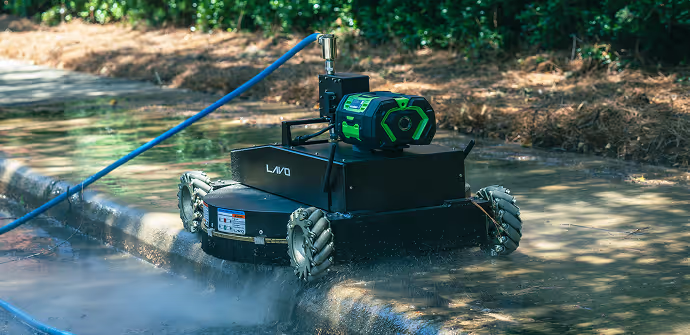
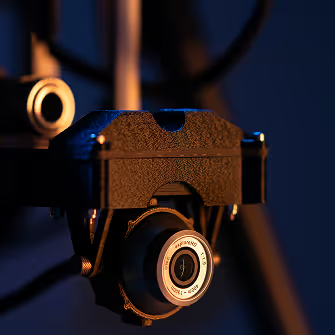

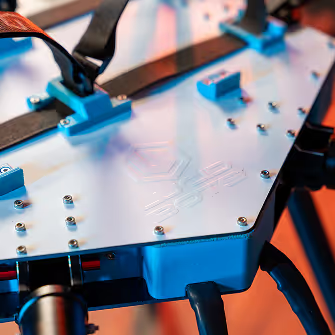
.avif)
.avif)
